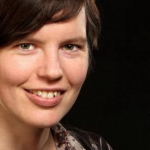hackAIR: collective awareness for air quality
European project creates tools for
citizens’ observatories on air pollution
Thessaloniki, January 2016. A consortium of six partners in five European countries has launched a project to develop an open technology toolkit for citizens’ observatories on air quality. The project hackAIR is supported through the EU programme on “Collective Awareness Platforms for Sustainability and Social Innovation” until December 2018.
“Air pollution is the single environmental issue Europeans worry about the most, and many do not feel sufficiently informed about air quality issues in their country. Air pollution, and more specifically particulate matter, shortens people’s lifespan and contributes to serious illnesses such as heart disease, respiratory problems and cancer”, says Arne Fellermann, air quality campaigner for Friends of the Earth Germany (BUND).
At the same time, it remains difficult for citizens to assess where and when they are exposed to air pollution from particulate matter. Official sensors are often few and far between, coverage is poor outside cities, and their data is not always easily accessible. The hackAIR toolkit aims to complement official data with a number of community-driven data sources, including:
- an easy-to-build open hardware sensor module that transmits regular air quality measurements via Bluetooth;
- air quality information derived from mobile phone pictures of the sky; and
- a low-tech measuring setup involving paper filters and aquarium air pumps.
“This crowd-sourced air quality data will provide citizens with improved information about air pollution levels where they live. This will be useful for people who like to exercise outside, look after children or the elderly or suffer from respiratory problems themselves. It will also allow for a conversation in the local community about possible improvements in air quality”, says Evangelos Kosmidis, managing director of DRAXIS Environmental Technologies.
The combination of both official open and community-driven data will thus contribute towards both individual and collective awareness about air quality in Europe, hereby encouraging changes in behaviour towards air quality improvements. Within the project, effective engagement strategies for monitoring air pollution and encouraging behavioural change towards air quality will be explored.
In 2016, the project partners will conduct a set of co-creation workshops with user communities and other involved stakeholders to determine needs and expectations and inform and evaluate the software design. The full platform is expected to be available for selected cities in 2017.
The consortium consists of Draxis Environmental S.A., the Norwegian Institute for Air Research, the Centre for Research and Technology Hellas, Friends of the Earth Germany, ON:SUBJECT and the SMIT Center for Studies on Media, Information and Telecommunication at the Vrije Universiteit Brussel. The Democritus University of Thrace and the Technological Educational Institute of Athens contribute as third parties affiliated to Draxis Environmental S.A.
––
For further information and to get involved, sign up for updates at www.hackair.eu or follow us on Twitter @hack_AIR.
Project coordinator: Dr. Machi Simeonidou, msimeonidou@draxis.gr
Media contact: Wiebke Herding, wiebke@onsubject.eu
This project has received funding from the European Union’s Horizon 2020 Research and Innovation Programme under Grant Agreement No. 688363.



 Panagiota Syropoulou (Draxis)
Panagiota Syropoulou (Draxis)
 Arne Fellermann (BUND)
Arne Fellermann (BUND) Paulien Coppens (VUB)
Paulien Coppens (VUB) Hai-Ying Liu (NILU)
Hai-Ying Liu (NILU) Wiebke Herding (ON:SUBJECT)
Wiebke Herding (ON:SUBJECT)
